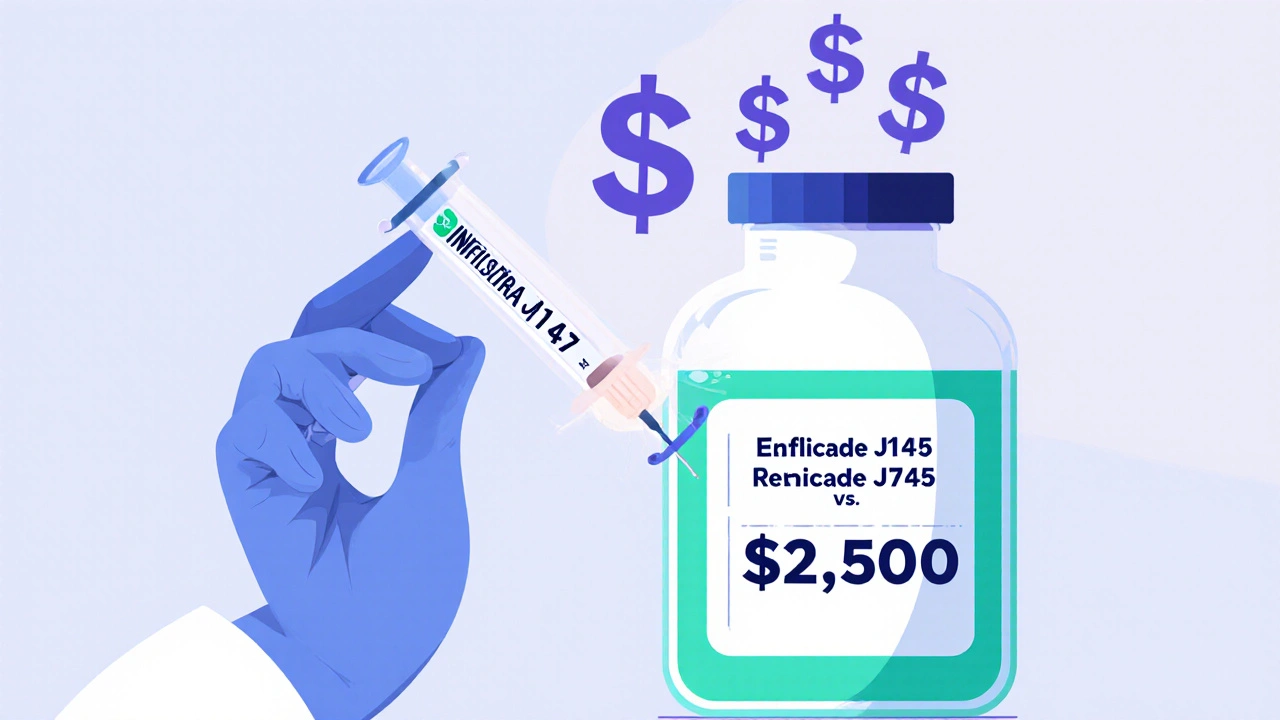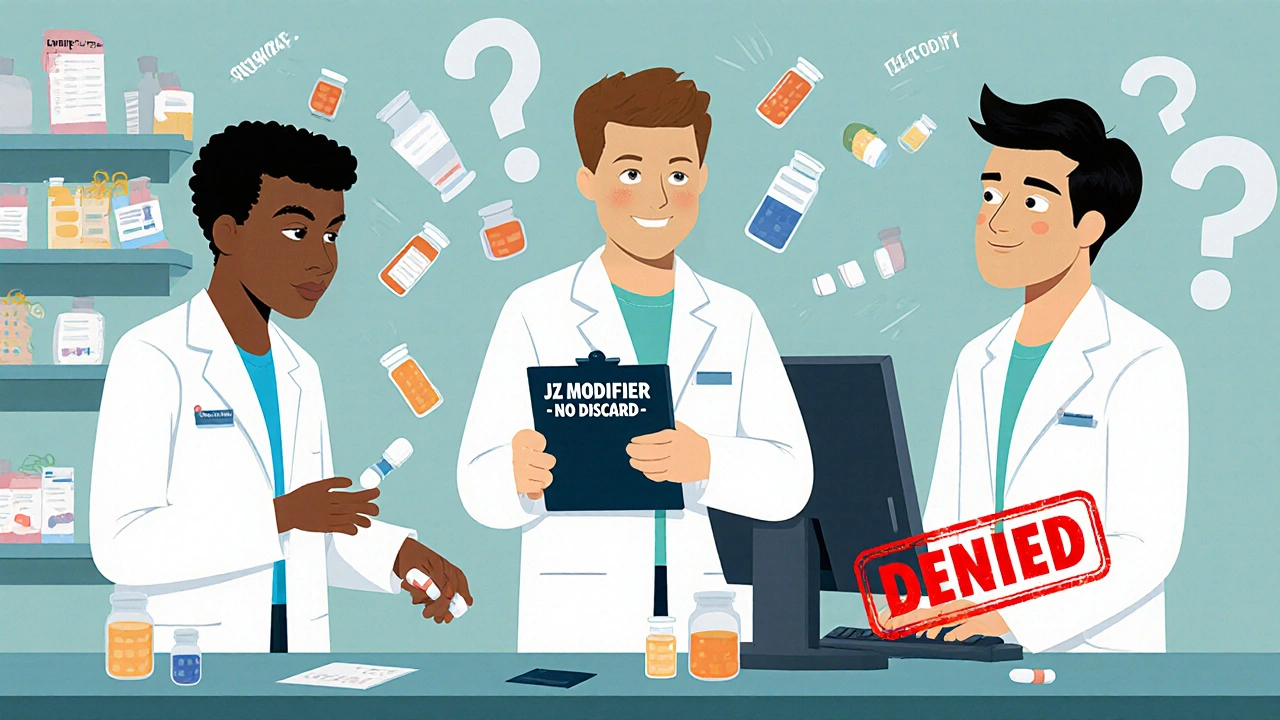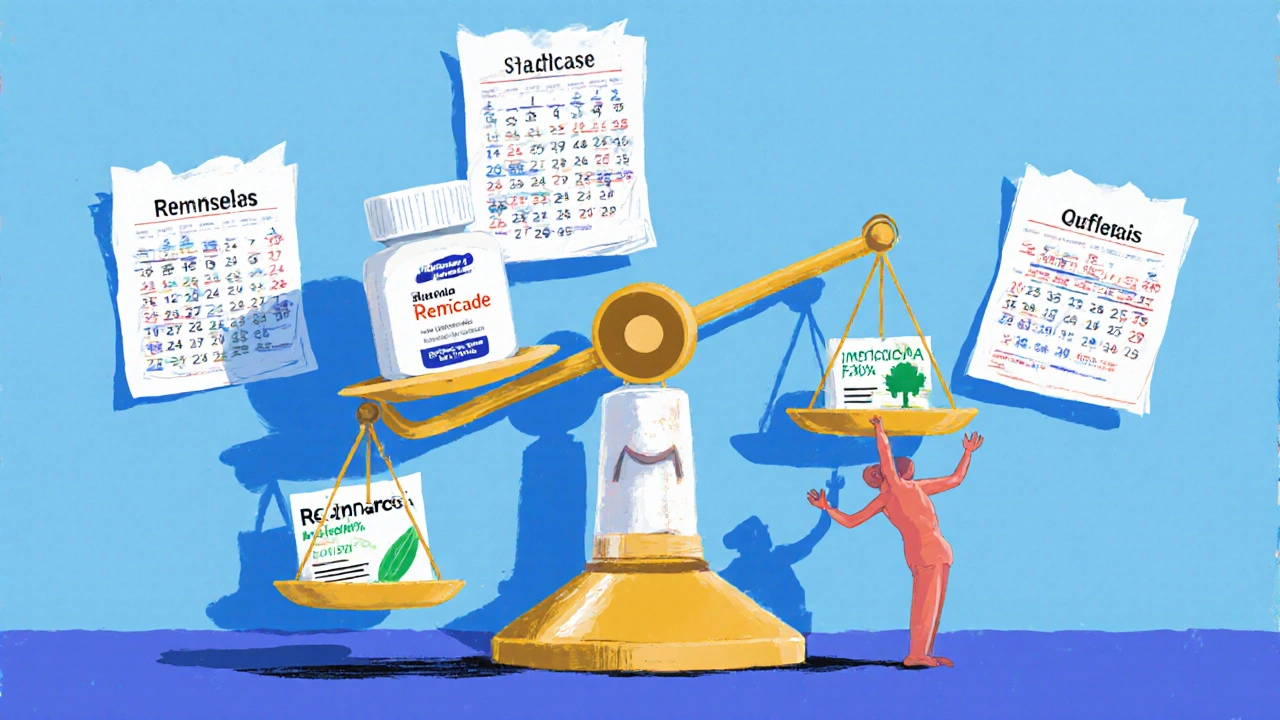Reimbursement and Coding for Biosimilars: How Billing Works Under Medicare Part B
 Nov, 24 2025
Nov, 24 2025
When a doctor prescribes a biosimilar instead of the original biologic drug, the billing process isn’t as simple as swapping one pill for another. Unlike generic small-molecule drugs, biosimilars are complex biological products made from living cells. And that complexity carries over into how they’re coded, billed, and paid for-especially under Medicare Part B. If you’re a provider, pharmacist, or even a patient trying to understand why your bill looks different, knowing how this system works isn’t just helpful-it’s essential.
How Biosimilars Are Different from Generics
Many people assume biosimilars work like generics. They don’t. Generics are chemically identical to their brand-name counterparts. Biosimilars are highly similar, but not identical. They’re made in living systems, so tiny variations in manufacturing can affect how they behave in the body. Because of this, the FDA doesn’t approve them as "interchangeable" unless they meet extra requirements. And Medicare’s billing system treats them differently too.Before 2018, all biosimilars for the same reference product-like infliximab-shared one HCPCS code: Q5101. That meant Inflectra, Renflexis, and others all got paid the same blended rate. But here’s the problem: if one biosimilar came in at a lower price, the others got a free ride. Providers had no financial reason to choose the cheaper option. The system rewarded the brand, not the savings.
The 2018 Shift: Product-Specific Codes
In January 2018, CMS changed the game. Each biosimilar now gets its own unique HCPCS code. Inflectra has J1747. Renflexis has J1748. And so on. This wasn’t just a paperwork change-it was a market reset.Now, reimbursement is calculated as 100% of the biosimilar’s own Average Selling Price (ASP) plus 6% of the reference product’s ASP. For example, if Remicade (the reference) sells for $2,500 per dose and Inflectra sells for $2,000, the provider gets paid:
- $2,000 (100% of Inflectra’s ASP)
- Plus $150 (6% of Remicade’s $2,500 ASP)
- Total: $2,150 per dose
Meanwhile, Remicade itself gets paid $2,650 ($2,500 + 6%). That $50 difference might seem small, but over thousands of doses, it adds up. And it’s why many providers still default to the reference product-even when a biosimilar is 20% cheaper.
The JZ Modifier: A New Layer of Complexity
Starting July 1, 2023, CMS added another layer: the JZ modifier. This applies to infliximab and its biosimilars. It tells Medicare that no drug was discarded during administration. If a vial holds 100 mg and you only use 70 mg, the remaining 30 mg is discarded. You used to bill for the full vial. Now, if you use the entire vial with no waste, you add JZ to the claim. If you discard any, you don’t.Why? To prevent overbilling. But here’s the catch: it’s created a paperwork nightmare. One gastroenterology practice in Ohio reported a 30% increase in billing staff time just to track discarded amounts. Pharmacies now need double-check systems: one person administers, another documents waste, and a third codes the claim. Mistakes mean denials-and delayed payments.

How Payment Rates Are Set and Updated
CMS updates biosimilar payment rates every quarter, based on ASP data submitted by manufacturers. The first biosimilar to enter a market gets a temporary Q-code and is paid at 106% of its Wholesale Acquisition Cost (WAC) until enough sales data exists to calculate ASP. After six months, it switches to a permanent J-code and gets paid based on real ASP.Subsequent biosimilars skip the WAC phase. They jump straight into the existing payment structure. That means if Inflectra is already on the market at $2,000, Renflexis enters and immediately gets paid 100% of its own ASP plus 6% of Remicade’s ASP-no grace period.
These rates are published in the Medicare Physician Fee Schedule. Providers must check CMS’s website every quarter. Outdated codes are the #1 reason for claim denials. One survey found 22% of initial rejections came from using last quarter’s code.
Why Adoption Is Still Slow in the U.S.
The U.S. biosimilar market hit $12.3 billion in 2022-but that’s only 18% of the total biologics market. Compare that to Europe, where biosimilars make up 75-85% of the market for the same drugs. Why the gap?The 6% add-on is the biggest culprit. It creates a perverse incentive. The more expensive the reference product, the more profit a provider makes-even when giving a cheaper biosimilar. A 2020 MIT analysis showed that for every dose of Remicade, providers earn $30 more than for Inflectra. That’s not a small margin-it’s a disincentive built into the system.
Even when biosimilars are 20-30% cheaper, providers often stick with the reference product. A 2022 survey of 217 cancer centers found that 68% experienced billing confusion after the 2018 code switch. Forty-two percent had claims denied in the first six months. Many practices still default to the brand because they’re not sure how to code correctly-or because they’re worried about audits.
What’s Next? Possible Reforms
There’s growing pressure to fix this. MedPAC (Medicare Payment Advisory Commission) has proposed a "consolidated billing" model. Under this idea, all drugs in a class-reference and biosimilars-would get paid based on the volume-weighted average ASP. That means if three biosimilars and one brand are on the market, everyone gets paid the same blended rate. It’s how Europe does it.Another idea: remove the reference product’s ASP from the biosimilar add-on. Instead of paying 6% of Remicade’s price, pay 6% of the biosimilar’s own price. Avalere Health estimates this could boost biosimilar use by 15-20 percentage points.
CMS is currently reviewing these options. In February 2023, they released an Advanced Notice of Proposed Rulemaking asking for feedback. A change could come as early as 2025. But until then, the system stays the same-and so do the incentives.

What Providers Need to Do Right Now
If you’re billing for biosimilars, here’s what you must do:- Use the correct HCPCS code for each biosimilar. Don’t guess. Check CMS’s quarterly updates.
- Apply the JZ modifier only if no drug was discarded. If you open a vial and use all of it, add JZ. If you discard even a drop, don’t.
- Train your billing team. The 2018 transition showed that 40-60 hours of training per practice was needed. Don’t wait for a denial to realize your staff is out of date.
- Use dual verification. Have a pharmacist confirm the drug given matches the code billed. Practices that do this reduce errors from 12-15% to under 3%.
- Know your payer differences. Medicare Part B pays 106% ASP. Medicare Advantage plans often pay less-100-103%. Commercial insurers vary wildly. Always verify before administering.
Manufacturers like Fresenius Kabi now offer free coding guides. One survey found 87% of providers rated them "helpful." Use them. They’re your best defense against denials.
Why This Matters for Patients
Patients don’t always see the billing side-but they feel the impact. If providers avoid biosimilars because of reimbursement rules, patients pay more out of pocket. Medicare Part B patients pay 20% of the payment amount. If the provider gets paid $2,150 for a biosimilar versus $2,650 for the brand, the patient pays $430 instead of $530. That’s $100 per dose. Over a year, that’s thousands.And it’s not just about cost. Biosimilars are just as safe and effective as the originals. The FDA requires them to meet the same high standards. But if the system doesn’t reward their use, patients may never get access to cheaper, equally good options.
Bottom Line
Biosimilar billing is a system built on data, not discounts. It tracks every dose, every code, every discarded milliliter. But it doesn’t yet reward the savings it was designed to create. The coding is precise. The payments are calculated. But the incentives? They’re still skewed toward the expensive drug.Until the 6% add-on is restructured, providers will keep choosing the brand. Patients will keep paying more. And the potential of biosimilars-to cut costs without cutting care-will stay locked in the system.
Do biosimilars have the same HCPCS code as the reference biologic?
No. Each biosimilar has its own unique HCPCS code-either a Q-code (temporary) or J-code (permanent). The reference biologic keeps its own separate code. For example, Remicade uses J1745, while Inflectra uses J1747. This change started in 2018 to ensure each product’s reimbursement reflects its own price, not a blended average.
Why do providers sometimes prefer the reference biologic over a cheaper biosimilar?
Because the reimbursement formula pays providers 6% of the reference product’s ASP, not the biosimilar’s. So even if a biosimilar costs 20% less, the provider’s add-on payment is based on the higher-priced brand. For example, if Remicade costs $2,500 and Inflectra costs $2,000, the provider earns $150 in add-on for Remicade but only $120 for Inflectra. That $30 difference adds up over time and creates a financial disincentive to switch.
What is the JZ modifier and when do I use it?
The JZ modifier is used on claims for infliximab and its biosimilars to indicate that no drug was discarded during administration. If you open a vial and use every milligram, you add JZ to the claim. If you discard any portion-even a few drops-you do not use JZ. This rule, effective July 1, 2023, prevents overbilling for unused drug. Misapplying it leads to claim denials and increased administrative work.
How often are biosimilar payment rates updated?
CMS updates biosimilar payment rates quarterly, based on Average Selling Price (ASP) data submitted by manufacturers. These updates are published in the Medicare Physician Fee Schedule. Providers must check these updates every three months to ensure they’re using the correct codes and payment amounts. Using outdated codes is the leading cause of claim denials.
Is there a difference in how Medicare Part B and Medicare Advantage pay for biosimilars?
Yes. Medicare Part B pays 106% of the biosimilar’s ASP (100% + 6% add-on). Medicare Advantage plans, which are run by private insurers, often pay less-typically between 100% and 103% of ASP. Some plans may even have their own formularies and prior authorization rules. Always verify payment terms with the specific plan before administering the drug.
What happens if a provider uses the wrong HCPCS code for a biosimilar?
The claim will be denied or paid at a lower rate, leading to delayed reimbursement and potential revenue loss. Common errors include using an outdated code, mixing up codes for similar drugs, or forgetting to switch from a Q-code to a J-code after six months. Practices that implement dual verification-pharmacist confirms drug, billing staff confirms code-reduce error rates from 12-15% to under 3%.
Are biosimilars as safe and effective as the original biologics?
Yes. The FDA requires biosimilars to demonstrate no clinically meaningful differences in safety, purity, or potency compared to the reference product. Thousands of patients have received biosimilars in the U.S. and abroad with the same outcomes as the original biologic. The difference lies in manufacturing complexity, not clinical performance.
What’s the projected market share for biosimilars in the U.S. by 2027?
Under current reimbursement rules, industry analysts project U.S. biosimilar market share will reach 45-50% by 2027. That’s still far below Europe’s 75-85%. Experts say adoption could jump to 65-70% if the 6% add-on payment is restructured to use only the biosimilar’s own ASP, not the reference product’s.
Amy Hutchinson
November 24, 2025 AT 20:07Okay but let’s be real - if the system pays you MORE to give the expensive drug, of course providers are gonna stick with it. It’s not about patient care, it’s about cash flow. And patients? They’re just the ones stuck with the bill. This isn’t healthcare - it’s a rigged game.
And don’t even get me started on the JZ modifier. Who thought this up? A bureaucrat who’s never held a syringe? I’ve seen nurses cry over this stuff. It’s not coding - it’s torture.
Archana Jha
November 26, 2025 AT 02:23lol the whole system is a deep state plot to keep big pharma rich. you think they really care about 'ASP' or 'HCPCS'? nah. they just want you to keep paying $500 per shot while they laugh all the way to switzerland. biosimilars are cheaper, safer, and just as good - but the system is designed to make you think otherwise. the FDA? paid off. CMS? bought. even the 'jz modifier' is just a distraction so you forget the real crime: profit over people. #pharmabrainwash
Aki Jones
November 27, 2025 AT 00:54Let’s not sugarcoat this: the 6% add-on is a structural incentive to perpetuate overpricing. It’s a classic case of regulatory capture - where the very entities meant to regulate are shaped by the interests of those they regulate. The fact that providers are financially rewarded for using the more expensive agent, despite identical clinical outcomes, constitutes a moral hazard of epic proportions.
And the JZ modifier? A bureaucratic farce. It transforms clinical care into a compliance audit. This isn’t medicine - it’s administrative theater. The system doesn’t reward value. It rewards complexity. And complexity = profit.
Jefriady Dahri
November 28, 2025 AT 12:47Bro, this is so real 😔 I work in a clinic in India and we see how biosimilars save lives every day - but here in the US, it’s like the system is fighting against itself. I wish more people knew how simple this could be: pay for the drug you give, not the one you didn’t.
Shoutout to the nurses and pharmacists who stay up late double-checking codes - you’re the real heroes. 🙏 Let’s fix this - together.
Andrew Camacho
November 29, 2025 AT 16:28Oh wow. So the government created a system where doctors make more money by prescribing the MORE expensive drug - and you’re surprised people don’t switch? This isn’t a flaw. It’s a feature. This is capitalism with a side of malpractice.
And now they want to add MORE modifiers? JZ? What’s next? JZZ? JZZZ? The billing department is now a full-time job for 3 people just to avoid getting audited. This isn’t healthcare - it’s a horror movie written by the IRS.
Arup Kuri
November 29, 2025 AT 21:54People still think this is about science? Wake up. It’s about who owns the patents and who controls the ledger. The FDA doesn’t care if you live or die - they care if the numbers add up. Biosimilars are cheaper because they’re simpler to make - but the system is rigged to punish simplicity. The brand gets the money. The patient gets the bill. The provider gets the headache. Everyone loses except the CEOs.
And don’t even mention Medicare Advantage - those plans are just middlemen with credit cards
Elise Lakey
December 1, 2025 AT 05:13I’m just trying to understand - if a biosimilar is clinically identical and cheaper, why does the reimbursement structure still tie to the reference drug’s price? It feels like the system is punishing innovation. Is there any data showing how often providers actually switch when they get clear training? I’d love to see a study on practices that successfully transitioned - maybe there’s a model we can scale.
Erika Hunt
December 2, 2025 AT 04:34It’s wild to think that a system designed to save money is actually costing more - not just in dollars, but in time, stress, and burnout. Imagine being a billing specialist who has to track every single drop of drug discarded, cross-reference it with a quarterly CMS update, and then pray the payer doesn’t deny it because you used last quarter’s code. And all of this for a drug that’s supposed to be cheaper and better?
It’s like building a highway to reduce traffic, but then making everyone pay a toll just to use the exit ramp. The incentives are backward, the paperwork is excessive, and the human cost is invisible until someone gets a denied claim and can’t afford their next dose. We need to fix this - not tweak it.
And honestly, the fact that manufacturers are offering free coding guides? That says everything. The system failed. The companies had to step in because no one else would.
Sharley Agarwal
December 3, 2025 AT 12:00Why even bother? They’ll never fix it. The system’s designed to fail. Patients pay more. Providers lose sleep. Biosimilars sit on shelves. Everyone loses. Just accept it.
prasad gaude
December 5, 2025 AT 11:31You know, in India, we call this ‘jugaad’ - making do with what you have. Here, they’ve built a Rube Goldberg machine just to pay for a drug. One vial, three people, five forms, a modifier, a quarterly update - and still, someone gets it wrong.
It’s like they took the beauty of science - molecules made from living cells, healing people - and wrapped it in a spreadsheet from 1998. The real miracle isn’t the biosimilar. It’s the nurse who still shows up at 7 a.m. to get it right.
Maybe the answer isn’t in codes or modifiers… but in trust. Trust that the drug works. Trust that the provider knows best. Trust that savings should be shared, not hidden in billing codes.
Timothy Sadleir
December 5, 2025 AT 17:45It is imperative to acknowledge that the current reimbursement paradigm, while administratively cumbersome, is predicated upon a data-driven methodology intended to ensure fiscal responsibility within the Medicare program. The utilization of Average Selling Price (ASP) metrics, coupled with the 6% add-on, is not an arbitrary construct but a mechanism designed to align provider incentives with market transparency. The JZ modifier, though introducing operational complexity, mitigates potential overbilling and enhances program integrity. To suggest that the system is inherently perverse is to misunderstand the structural necessity of accountability in public healthcare financing. Reform must be evidence-based, not emotionally driven. The data speaks - and the data must be respected.